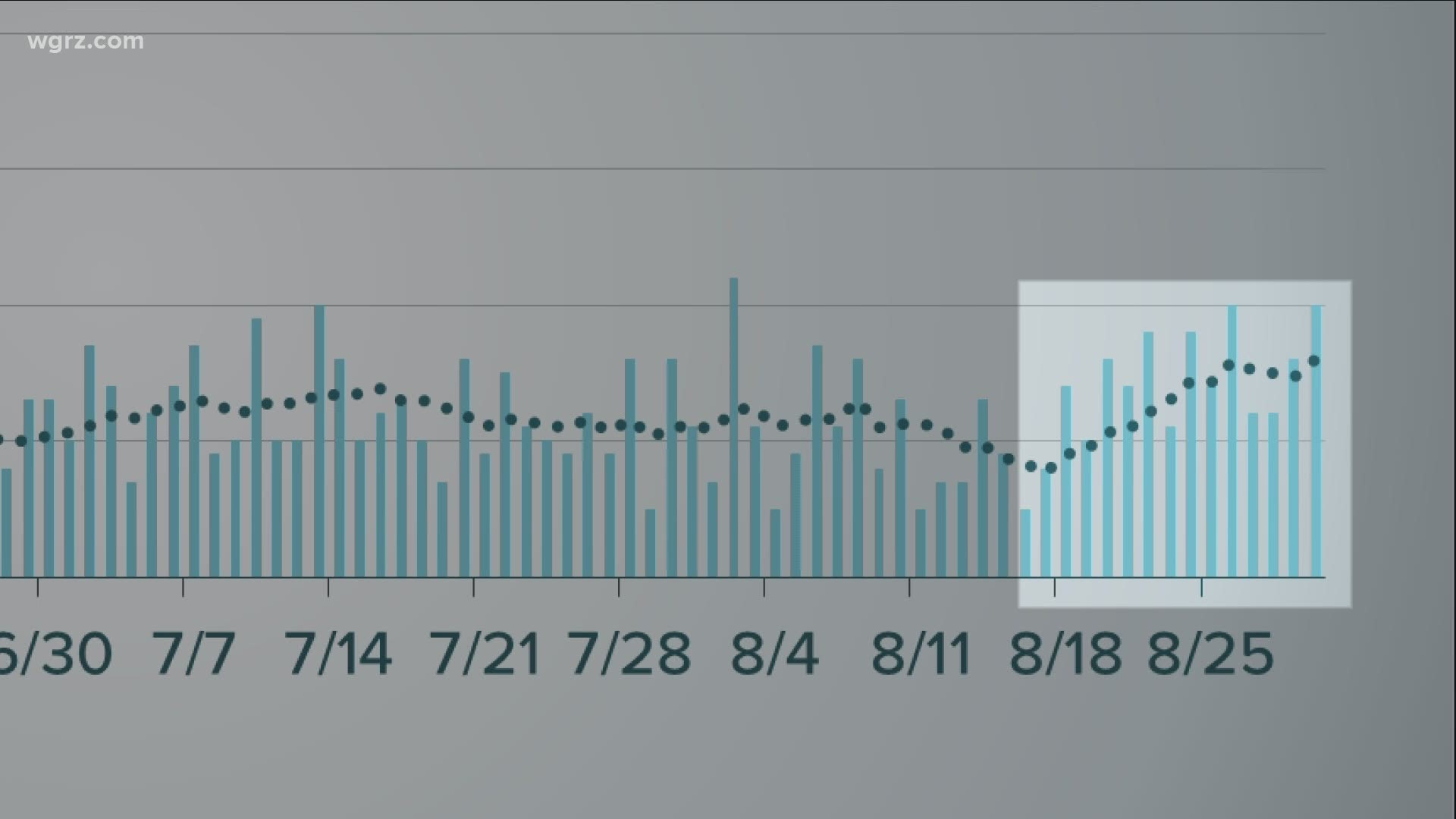ALBANY, N.Y. — New York Governor Andrew Cuomo held a conference call Monday afternoon providing an update in the state's progress on the COVID-19 pandemic.
Governor Cuomo stated that the caution flag is still waving for the Western New York region and also said that, "we need a real alert" for the area.
Since the rapid COVID-19 testing began in WNY, results show a 2% positive for the region.
Cuomo also said that hospitalizations are, "ticking up" and that Western New York needs local compliance and local governments to enforce compliance.
On Sunday, 1,200 rapid COVID-19 tests were completed at the eight sites set up by NYS. Overall, there was a 3.1% positive rate for the region on Sunday. Buffalo had 4.8% positive rate, Erie County (without Buffalo) had .6%, Niagara County 4.0% and Chautauqua County has 1.0% positive rates.
Since the rapid test sites have opened, 4,200 tests have been completed with a 2% positive rate.
The rapid test sites will be up through the end of the business day on Wednesday.
While numbers in the WNY region continue to increase, the numbers elsewhere in the state are trending downward. NYS had a .9% positive rate on Sunday. Hospitalizations statewide are down to the lowest numbers since the pandemic began.
Human coronaviruses are usually spread through...
- The air by coughing or sneezing
- Close personal contact, such as touching or shaking hands
- Touching an object or surface with the virus on it, then touching your mouth, nose or eyes before washing your hands.
Help stop the spread of coronavirus
- Stay home when you are sick.
- Eat and sleep separately from your family members
- Use different utensils and dishes
- Cover your cough or sneeze with your arm, hot your hand.
- If you use a tissue, throw it in the trash.
Lower your risk
- Wash your hands often with soap and water for at least 20 seconds. If soap and water are not available, use an alcohol-based hand sanitizer.
- Avoid touching your eyes, nose, and mouth with unwashed hands.
- Avoid close contact with people who are sick.
- Clean and disinfect frequently touched objects and surfaces.
- If you are 60 or over and have an underlying health condition such as cardiovascular disease, diabetes or respiratory illnesses like asthma or COPD, the World Health Organization advises you to try to avoid crowds or places where you might interact with people who are sick.


